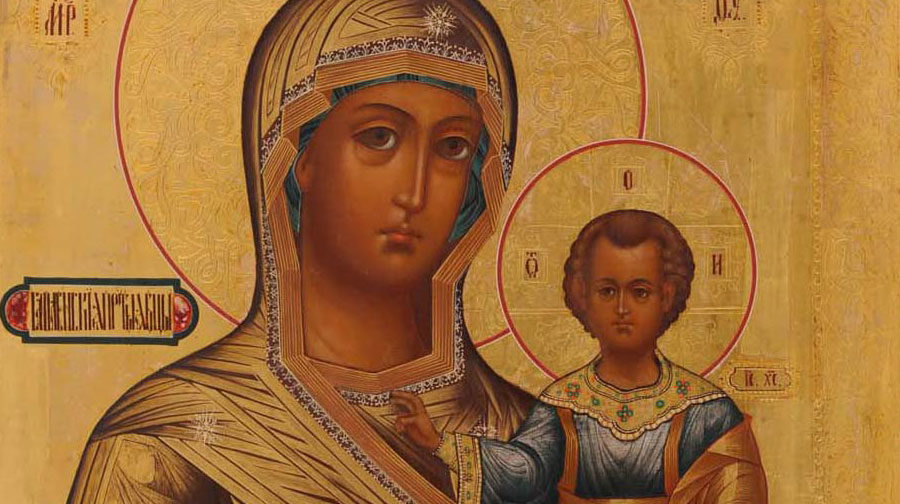
The Russian Orthodox Church celebrates today the feast of the Smolensk Icon of the Mother of God. This image - along with the Vladimir and Kazan icons - is one of the three most revered Orthodox shrines in Russia.
According to church tradition, the image was painted by the apostle and evangelist Luke himself during the earthly life of the Mother of God at the request of Theophilos, the ruler of Antioch. It is a half-length image of the Mother of God, with the Christ-child, who sits on her left hand. The Savior blesses with his right hand, and holds a scroll in his left.
The Byzantine emperor Constantine IX Monomakh, giving his daughter Anna in 1046 to marry the son of Yaroslav the Wise Prince Vsevolod, blessed her on her journey with this icon. Historians suggest that this is where its name 'Odigitria', that is, 'guidebook', originated. So the shrine first came to Russia.
Many miracles took place from the icon. The deliverance of Smolensk from the Tatars is especially known among them. Tradition says that in 1238 the Orthodox warrior Mercury heard a voice emanating from the icon. At night, he penetrated the camp of Khan Batu and killed many enemies. It is also believed that the prayers of believers in front of the image in 1514 helped the troops of Prince Vasily III to free Smolensk from Lithuanian rule. At the same time, it was installed and celebration day - August 10 (July 28, old style). And during the Patriotic War of 1812, the icon was specially delivered from Smolensk to Moscow. On the day of the Borodino battle, it was carried around the White City and the Kremlin.
The Smolensk Icon of the Mother of God enjoys great veneration among the Orthodox. Lists from it are distributed in many churches. There are more than thirty miraculous and especially revered copies of this icon.





